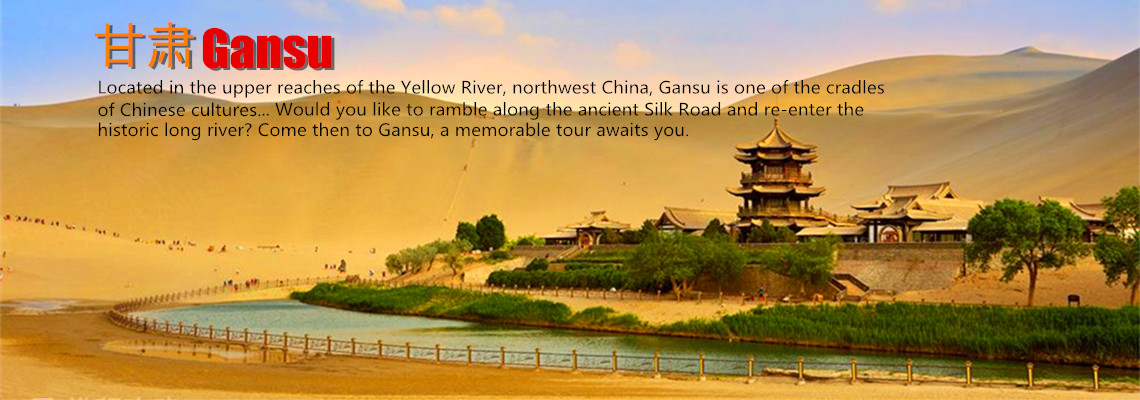Skype: neodalle-travel
Tel: +86 135 7447 2266
E-mail: sales@zhangjiajieholiday.com

History of Longnan
The history of the Longnan region can be traced back to distant ages. By the time of the Zhou Dynasty (11th Century BC-221BC), Longnan had become the cradle of the Qin State which developed into the Qin Dynasty (221BC-206BC), the unifier of the whole country after the Warring States Period (476BC-221BC). Wudu Special District was established in 1949, changed to Longnan Region in 1985 and promoted to being a regional city in 2004.
Physical Features of Longnan
Longnan lies in the transition area of China's steppes with the Southern Gansu Plateau in the west, Sichuan Basin in the south, Qinling Mountains and Hanzhong Basin in the east, as well as the Loess Plateau in the north. The terrain of the city is higher in the northwest and lower in the southeast. High mountains and deep valleys interweave with hills and basins, forming the unique and complex landform of Longnan.
Climate and Weather of Longnan
The city enjoys a monsoon climate. Affected by its geographic features, the climate in different regions varies greatly. From the southeast to the northwest, there is a subtropical humid climate, warm temperate humid climate, temperate semi-humid climate and alpine and humid climate. The span of annual average temperatures extends 10C (50F), from 5C to 15C (41F to 59F).
Resources in Longnan
Longnan has 34 kinds of minerals and 445 mineral deposits, among which lead, zinc, gold, antimony, copper, manganese, mercury, limestone and six other minerals are dominant minerals.Longnan is rich in water resources. It has a total of 3,760 rivers, including the four major river systems of the Jialing River, Bailong River, Baishui River and the western Hanshui River. With an annual runoff of 27.9 billion cubic meters, its water reserves are 4.26 million kilowatts, 2.6 million kilowatts of which can be developed for use.
Longnan's forest coverage rate reaches 42 percent, 14 percent higher than the national average. The city is home to more than 1,300 kinds of trees and 1,200 kinds of traditional Chinese medicines. Olive, tea, gingko, agaric and Radix hedysari are famous inside and outside of Gansu province. The city has 619 species of wild animals, including pandas, golden monkeys and 14 other first-grade state protection animals. Longnan has 2,500 kinds of plants, including the Chinese dove tree, gingko and four other kinds of first-grade state protection plants.
Tourism in Longnan
Longnan has four national 4A tourist scenic areas and a number of cultural landscapes, including the ancient battlefield of the Three Kingdoms (AD 220-280), cliff inscriptions, the relics of Qiuchi State and Guangergou National Forest Park.
Economy of Longnan
Longnan's total output value reached 19.77 billion yuan ($3.24 billion) in 2011, an increase of 12.5 percent year-on-year. The primary industry achieved an added value 5.05 billion yuan, an increase of 6.5 percent year-on-year. The secondary industry reached an added value 6.06 billion yuan, an increase of 18.2 percent year-on-year. The service industry achieved an added value 8.66 billion yuan, an increase of 12.4 percent.
Characteristic industries
Local industries such as olives, tea, Codonopsis, apples, Radix hedysari, agaric, gingko, prataculture, stockbreeding and the vegetable industry are the pillars of Longnan.
Living in Longnan
The per capita disposable income of urban residents in 2011 was 12,124 yuan, an increase of 14.1 percent from the previous year. The per capital annual expenditure on consumption was 8,933 yuan, an increase of 15.8 percent year-on-year. The per capita net income of farmers reached 2,621 yuan, an increase of 14 percent over 2010.
Social undertaking in Longnan
Longnan had 2,338 schools with 27,362 staff workers by the end of 2011. Longnan has nine performance groups presenting 136 performances annually to over 900,000 guests. It had 1,843 public healthcare and medical institutions with 2,490 medical practitioners and assistant medical practitioners, 1,512 registered nurses and 342 pharmacists.
 Ask Questions ?
Ask Questions ?